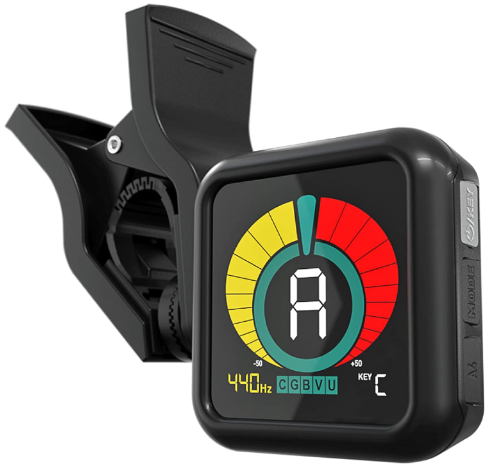Tuning your guitar is the first melody you create, setting the stage for your musical journey. This step-by-step guide is designed for beginners, ensuring that your guitar is in perfect harmony before you start strumming.

1. Understanding Standard Tuning:
- Before you start tuning, familiarize yourself with standard tuning, which is EADGBE from the lowest (thickest) string to the highest (thinnest) string.
2. Get a Reliable Tuner:
- Invest in a digital tuner for accurate tuning. Clip-on tuners are convenient and effective, providing visual feedback on whether a string is in tune.
3. Tuning the Low E (6th) String:
- Play the low E string.
- Adjust the tuning peg until the tuner shows the note E and the needle or display centers.
4. Tuning the A (5th) String:
- Play the A string.
- Adjust the tuning peg until the tuner shows the note A and indicates that it’s in tune.
5. Tuning the D (4th) String:
- Play the D string.
- Adjust the tuning peg until the tuner shows the note D, ensuring it aligns with the correct pitch.
6. Tuning the G (3rd) String:
- Play the G string.
- Adjust the tuning peg until the tuner displays G and indicates that it’s in tune.
7. Tuning the B (2nd) String:
- Play the B string.
- Adjust the tuning peg until the tuner shows the note B, achieving perfect pitch.
8. Tuning the High E (1st) String:
- Play the high E string.
- Adjust the tuning peg until the tuner displays E, ensuring it aligns with the correct pitch.
9. Check Your Tuning Twice:
- After tuning all strings, go through the process again to ensure accuracy. Small adjustments may be needed.
10. Alternate Tunings (Optional):
- Explore alternate tunings if you want to experiment with different sounds. Common alternate tunings include Drop D, Open D, and Open G.
11. Fine-Tuning by Ear (Optional):
- Develop your ear by fine-tuning the strings by listening for a perfect match with the reference pitch.
Your Tuning Ritual
Tuning your guitar is not just a technical task; it’s a ritual that connects you to the essence of your instrument. As a beginner, this guide ensures that your guitar is in tune, allowing you to embark on a harmonious musical journey.
#GuitarTuning #BeginnerGuitar #Harmony






